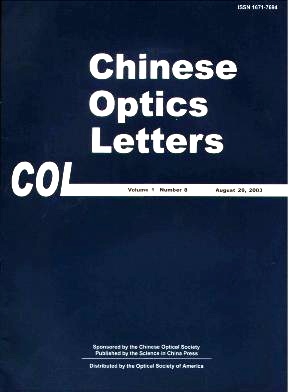Chinese Optics Letters, 2003, 1 (8): 08455, Published Online: Jun. 6, 2006
Design and analysis of the optical transceiver for mobile atmospheric laser communication  Download: 529次
Download: 529次
060.4510 optical communications 220.4830 optical systems design 010.3310 laser beam transmission 040.5160 photodetectors
Abstract
The concept of mobile atmospheric laser communication (MALC) is introduced in this paper. Atmospheric attenuation, turbulence-induced scintillation and beam wander cause deep fades in the beam power and degrade the optical channel. The optical transceiver presented in this paper is designed for a MALC test system. Currently achievable hardware performance capabilities for the MALC terminals are used as input parameters to the analysis. A novel optical transceiver structure is designed. Link margin is analyzed using the MALC analysis software, our optical link analysis program. Data rate, bit-error rate, prime transmit power requirements, optical link margin, pulse width, background signal, aperture quality and atmospheric effects drive the optical transmitter requirements. Results are displayed as required aperture size, aperturenumber and the spacing between apertures for a given range and terminal moving speed. The aperture size is parameterized by data rate, transmitting optical power and wavelength. Si-APD and CCD are selected as the main receive detectors. The receiver aperture, detector size (diameter), receiver speed and sensitivity are the main factors to consider in the design of the receiver.
Dongtang Ma, Jibo Wei, Zhaowen Zhuang, Tao Wen. Design and analysis of the optical transceiver for mobile atmospheric laser communication[J]. Chinese Optics Letters, 2003, 1(8): 08455.





